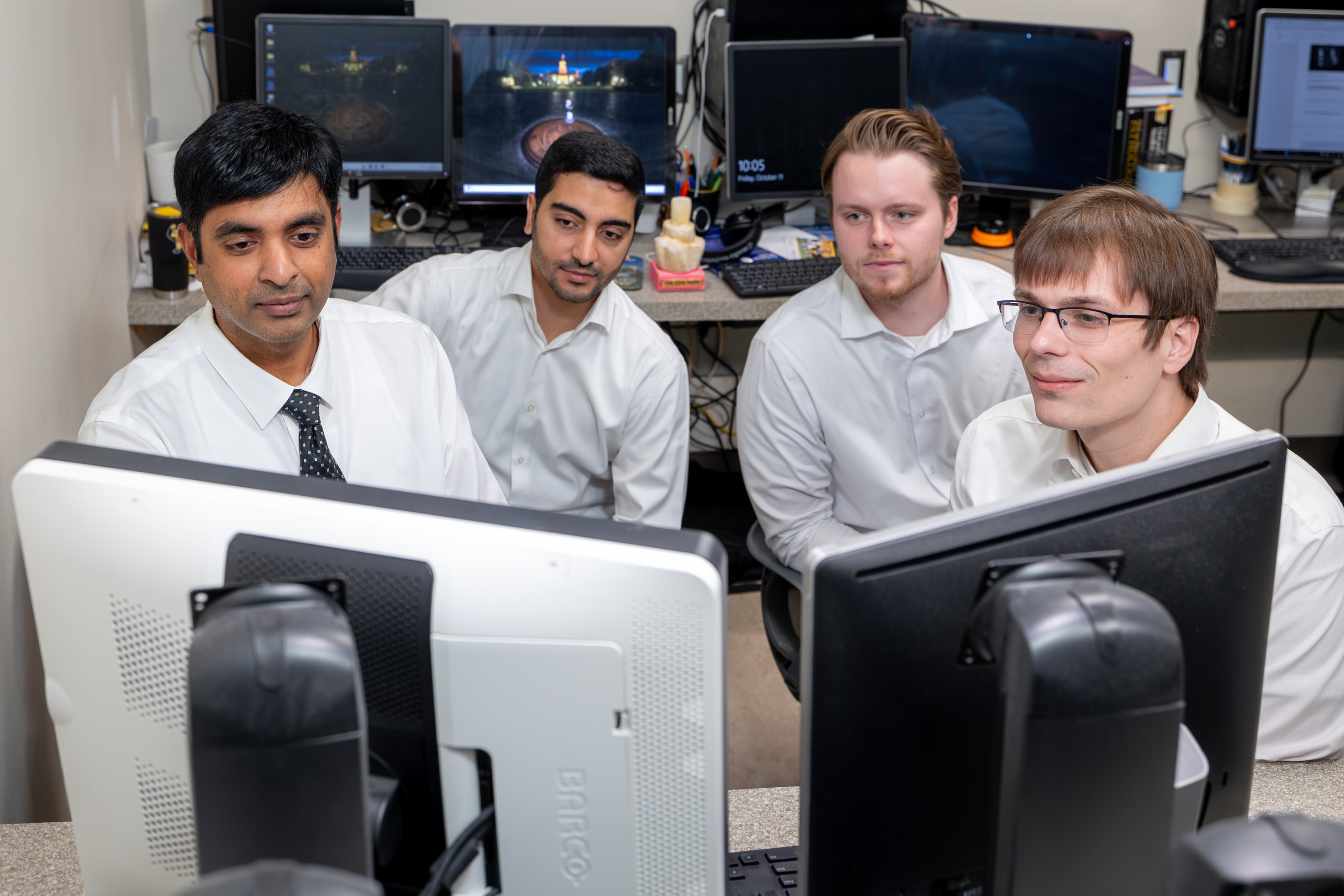Editor's note: This story first appeared in the Fall 2024 Dental Link magazine. If you would like to view the full magazine, click here.
Artificial Intelligence (AI) is rapidly revolutionizing healthcare. Nearly every industry is seeing emerging workflows using AI, including dentistry. While optimism garners the most attention, looming right behind are ethical dilemmas that challenge the immediate integration of AI technologies.
Trishul Allareddy, professor and department chair of Oral Pathology, Radiology, and Medicine, has had a front seat in the evolution of AI and machine learning algorithms and recognizes these dilemmas in dentistry. He has been working with collaborators, including the American Dental Association (ADA) and Digital Imaging and Communications in Medicine (DICOM), to ensure the creation a national baseline for AI within organized dentistry, the maintaining of patient privacy, and the integrity of clinical decisions.
“My collaborators and I have been working with AI for the last 11-12 years, even before it became mainstream like today,” says Allareddy, “Around 2010 we started working with big data and eventually thought on how AI could be implemented in the future to read radiographs.”
Fast forward to 2024 and AI is now capable of interpreting radiographs. However, this rapid progress has outpaced regulatory oversight, raising concerns about potential misuse and bad actors. Through his roles at the national level, Allareddy is developing ethical frameworks to address these issues as well as his vision for the future of AI in dentistry.
“We want to set standards on guidelines that we should use when you are developing these deep learning models,” says Allareddy, “If a company develops a model to evaluate a disease, we would run it against our model and see how it performs. We would then report back whether it is good enough to use in a practice. In that way, we can almost act as an independent agency within the ADA.”

AI’s momentum over the last year has been sparked by widespread access to Large Language Models (LLM), the driving force behind what we understand as AI today, and that has significantly quickened the pace at which AI is advancing.
LLMs are a type of model designed to understand, contextualize, and generate human language. These models are trained on vast amounts of data for instructed use on specific tasks. Examples of LLMs include Chat-GPT from OpenAI, Microsoft’s Co-Pilot, Google’s Gemini, and Claude by Anthropic.
While LLMs have swiftly progressed, granting greater freedom and capability to just about everyone for nearly any task, this broad accessibility brings more ethical issues to light. The most pressing challenges center on safeguarding patient confidentiality and preserving the soundness of clinical judgments.
“There should be checks and balances when using a third-party algorithm or AI to protect our patients,” says Allareddy, “A patient’s information must be de-identified before being sent off to be read and interpreted by an AI and then there must be a mechanism to put that information back in place, so that the patient’s information is always secure.”
AI’s capabilities in reading radiographs are impressive but not without limitations. For the foreseeable future, human oversight will be necessary. Allareddy won’t go as far as to say AI will soon replace radiologists, but insists that adopting it into their workflow will enhance efficiencies rather than over relying on it.

“It mainly helps as a diagnostic aid,” says Allareddy, “So if I use an algorithm in my workflow and normally, I do 15-20 cases a day, I could probably do 25-30 cases a day because for certain portions of it, I can depend on the algorithm and I provide quick oversight to ensure everything is right. I still use my expertise and knowledge, but it is in making sure nothing in the big picture is missed. Human oversight is essential.”
For common diseases, the vast amount of data available fine-tunes these algorithms to create increasingly accurate results, so when creating an AI algorithm, the key is the volume of data provided. The more data an algorithm has absorbed, the more reliable the results, which means the most common diseases will see the greatest benefit from AI-driven diagnostics.
“When you’re developing AI algorithms, what you’re doing is kind of marking out the areas where you think the disease processes is going on, and we have that information in structured reports which can be easily extracted for thousands of cases. The more common the disease, like the detection of caries or periodontal disease, the more cases an AI algorithm can learn from.”
The onset of AI provides a powerful tool for providers that promises efficiency and accuracy, but while it may be tempting to take a large leap forward into AI, small steps are necessary to ensure those in our clinics receive the best possible care.
